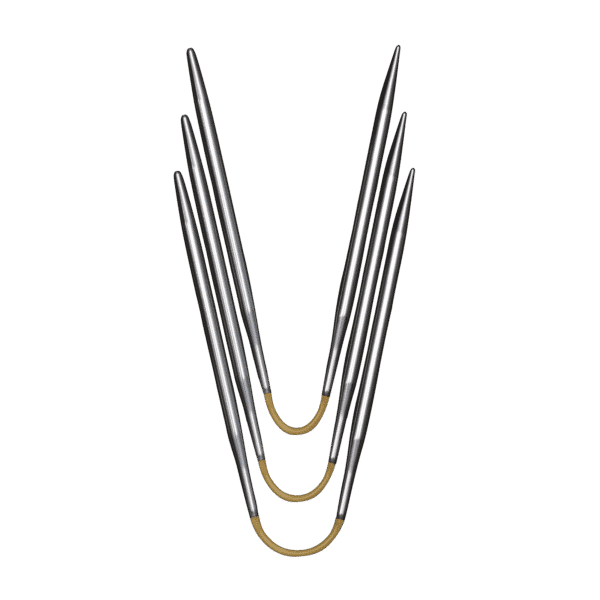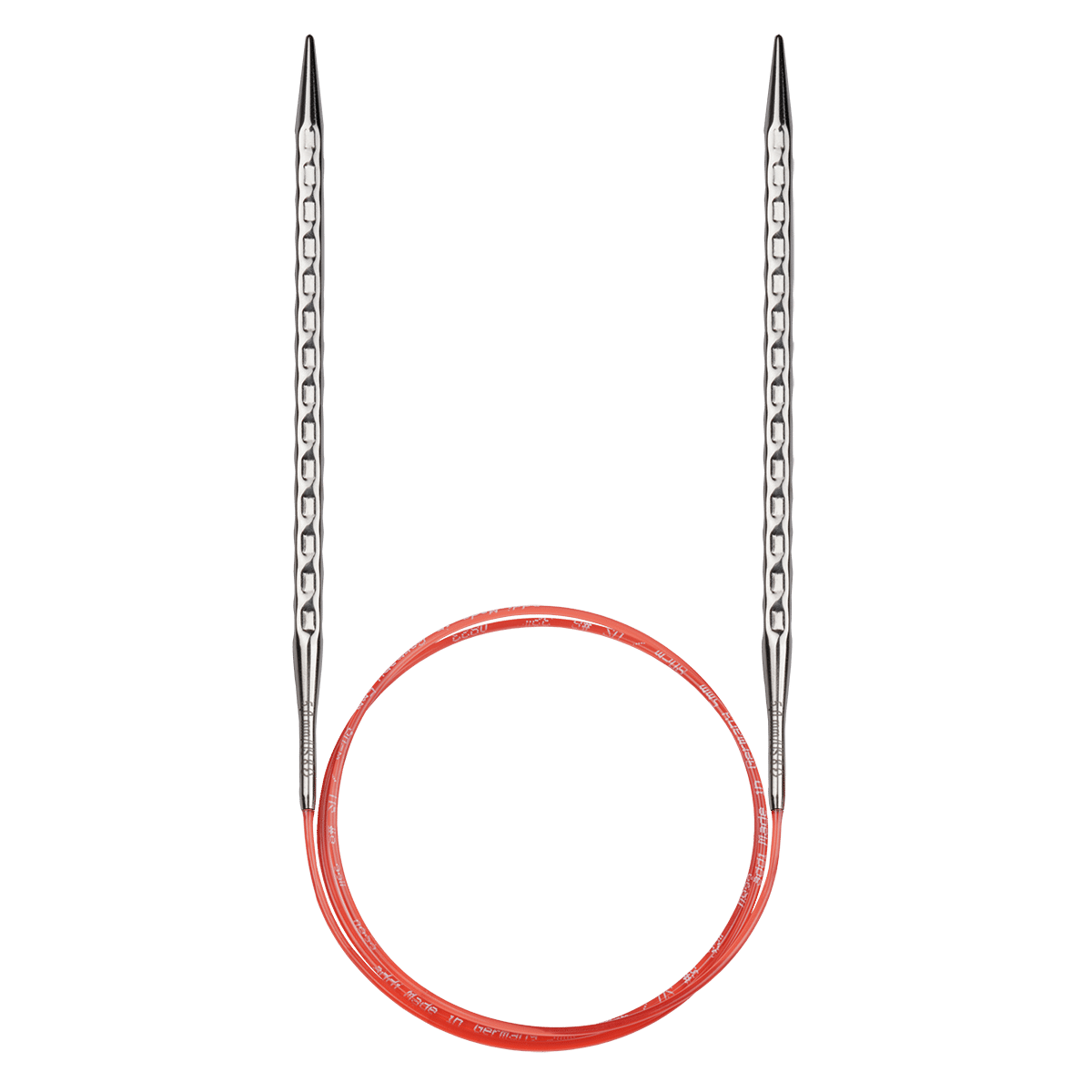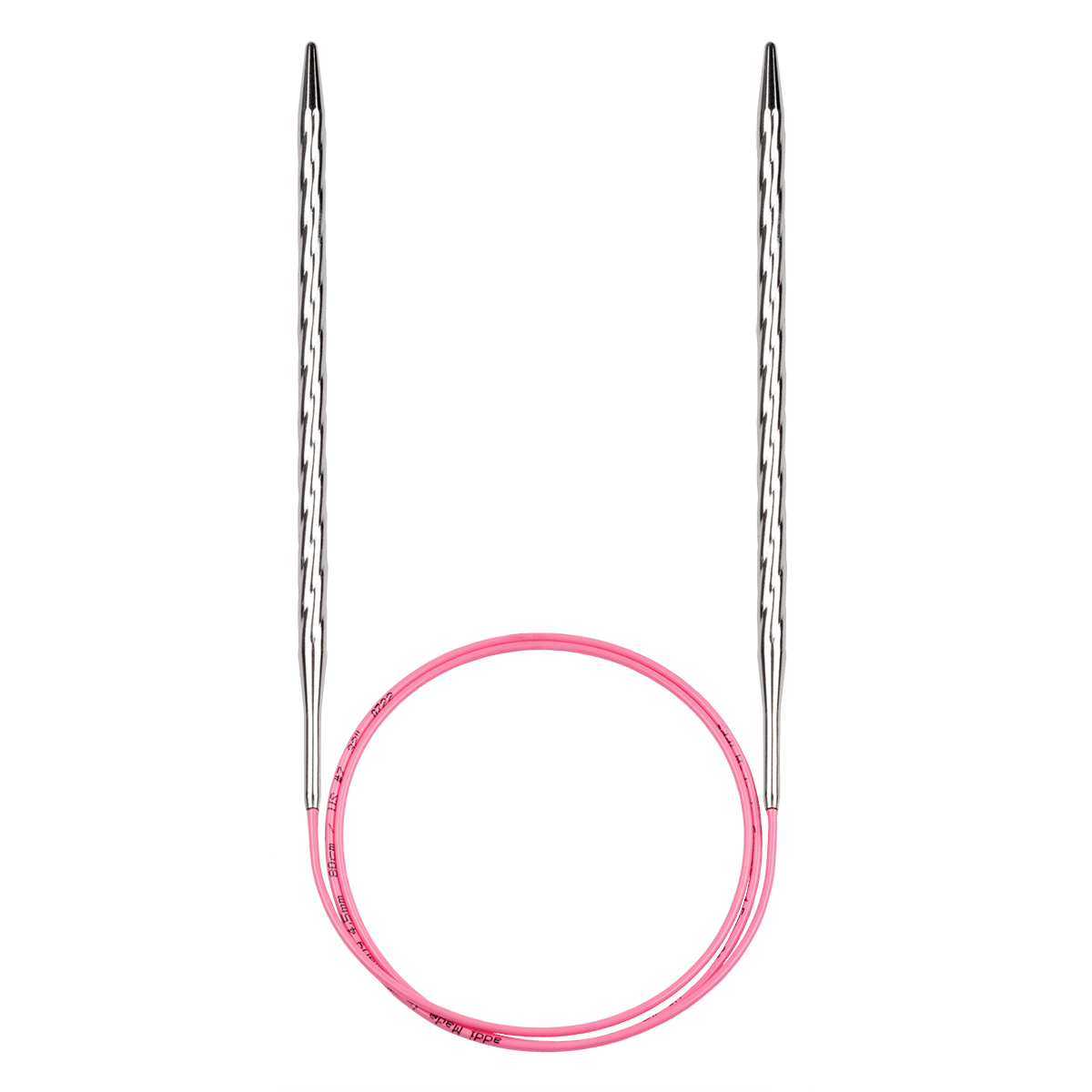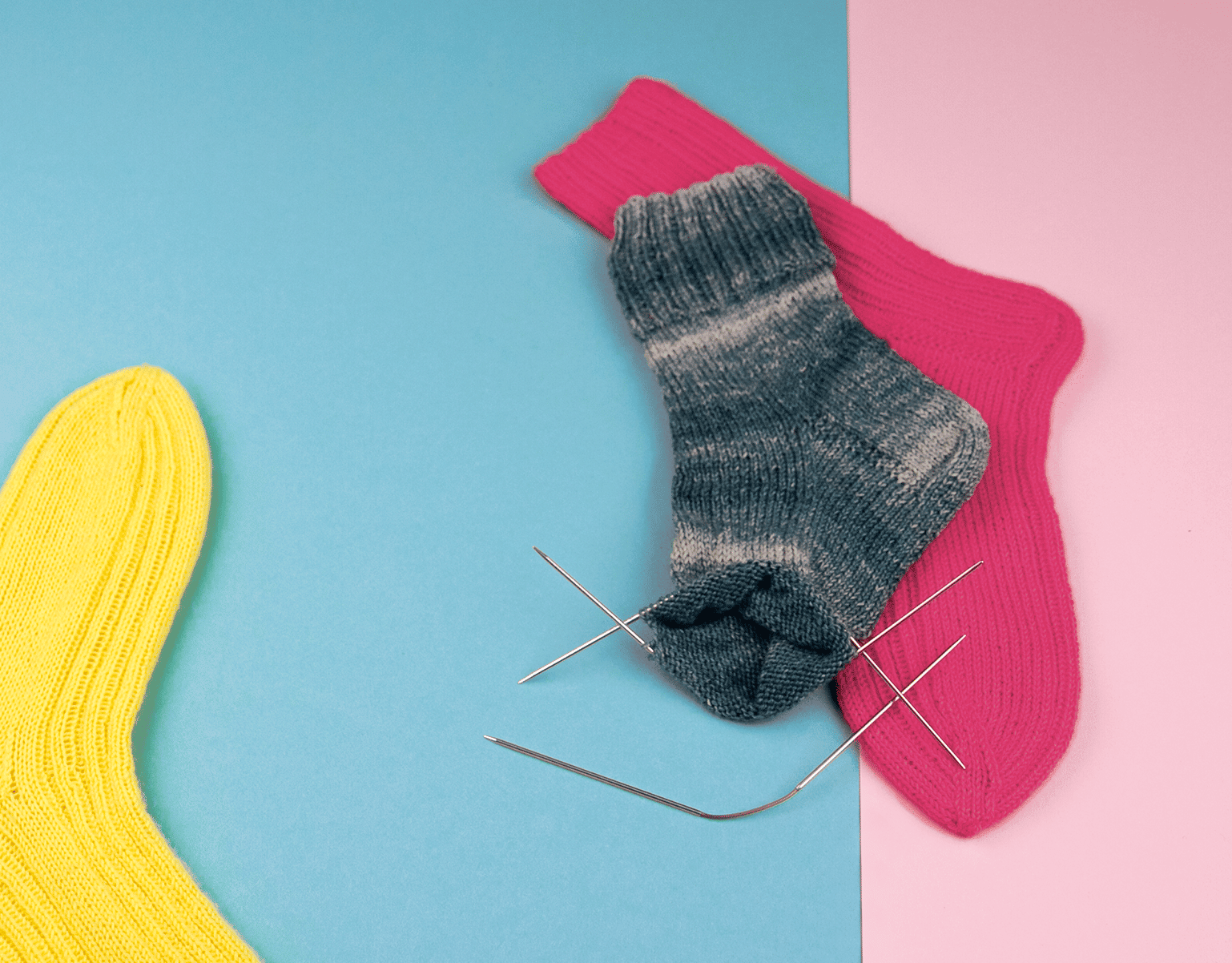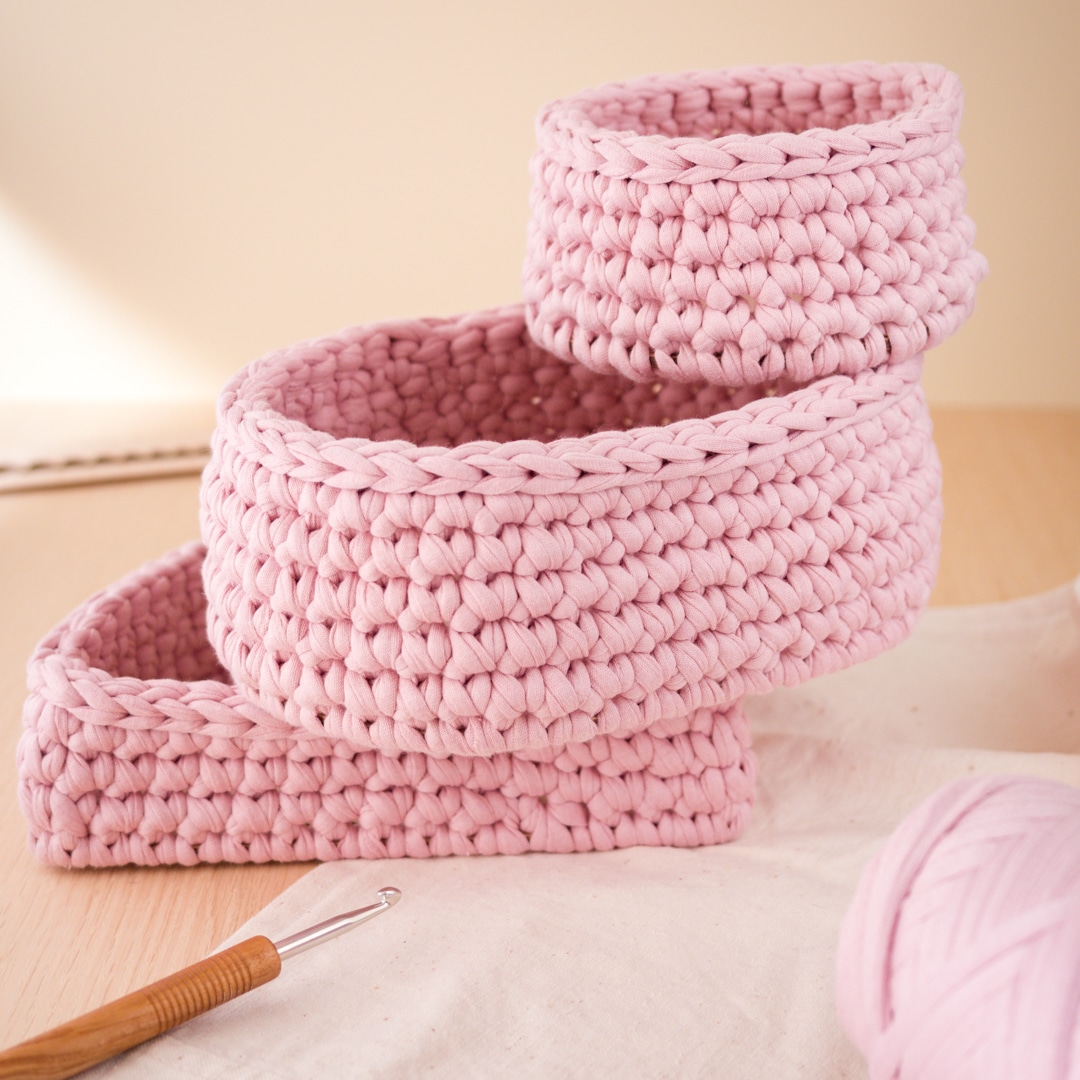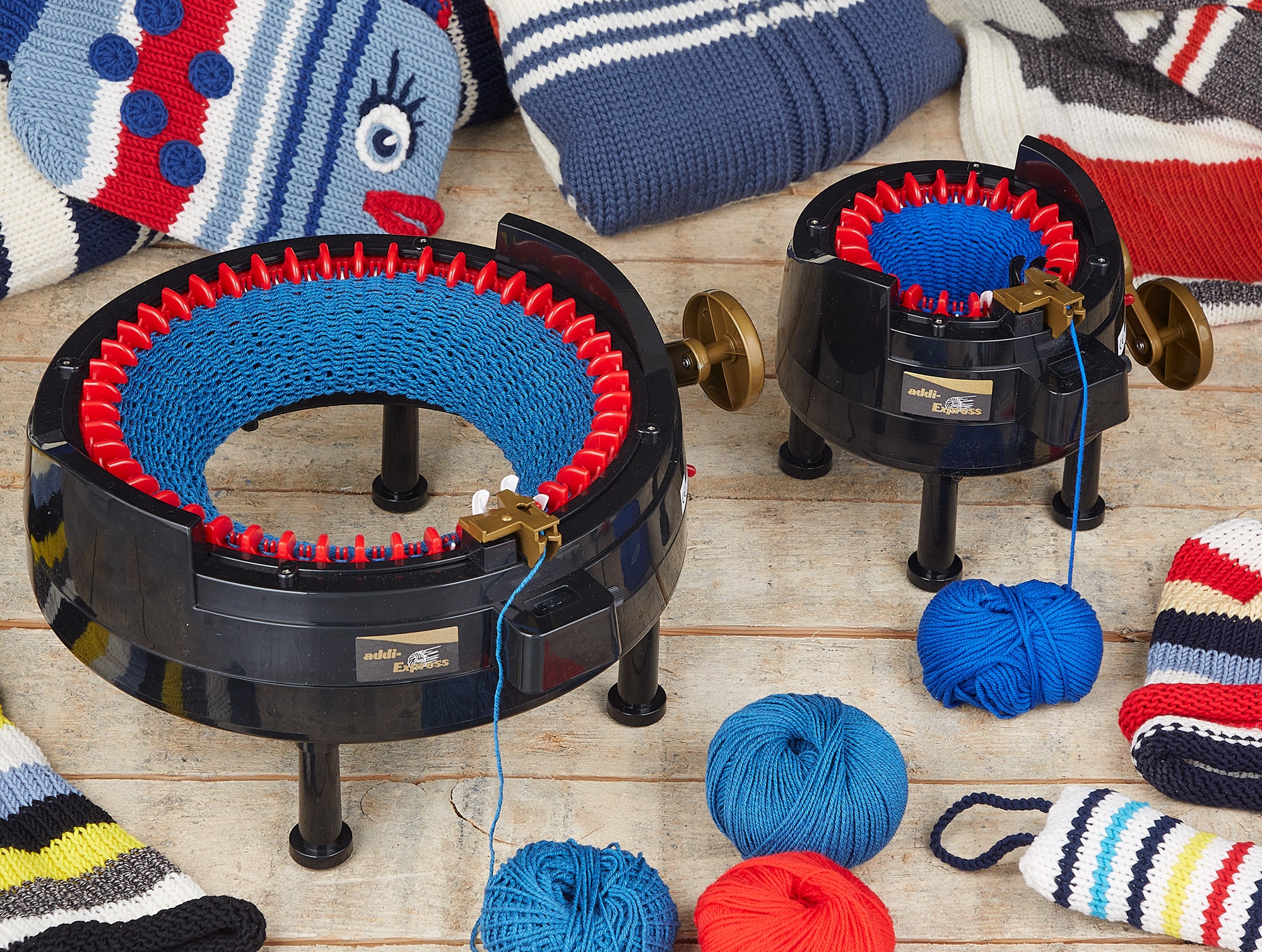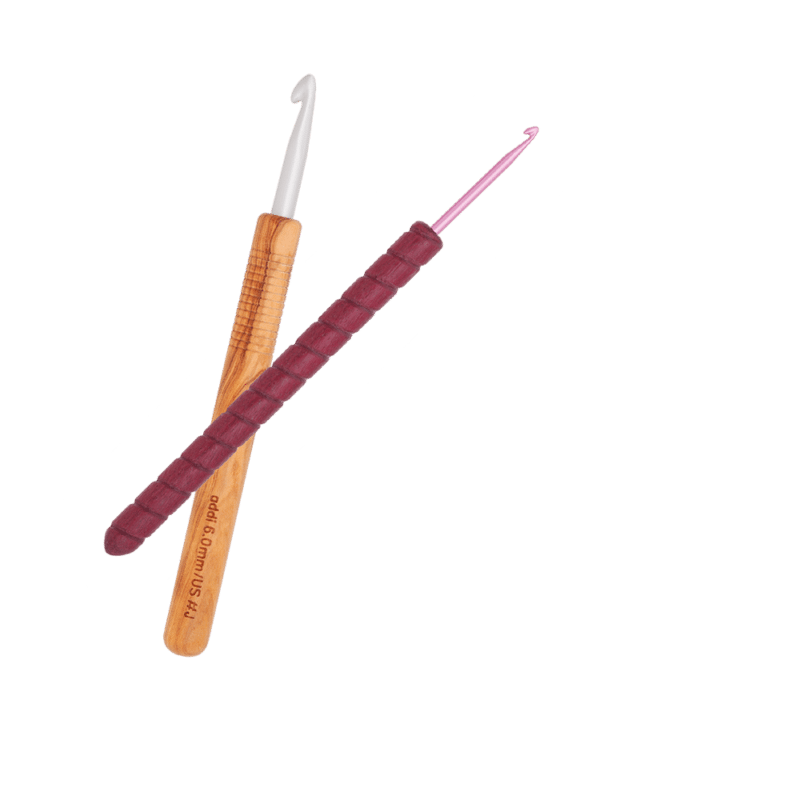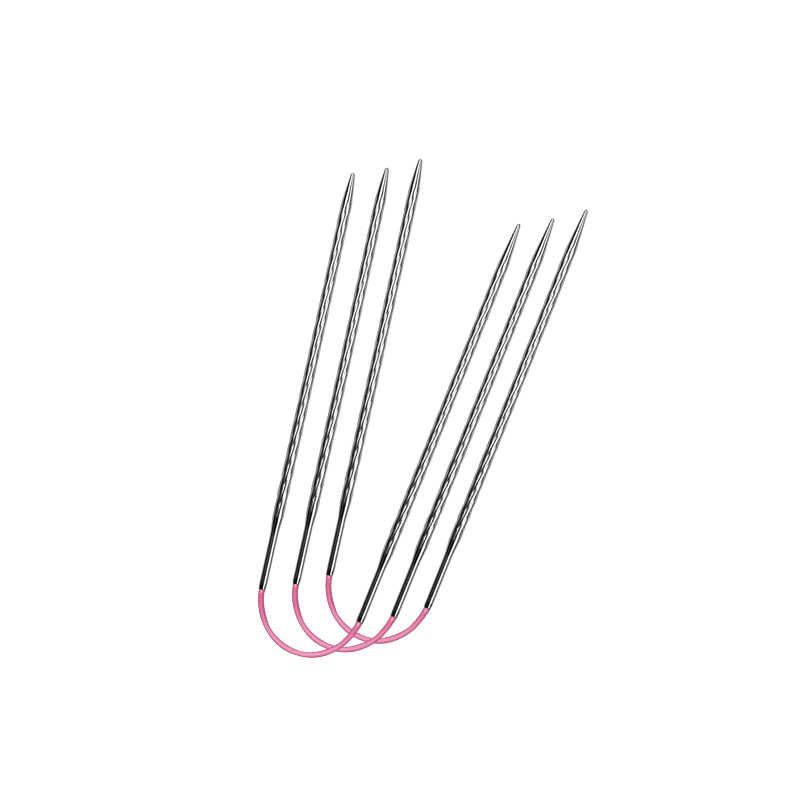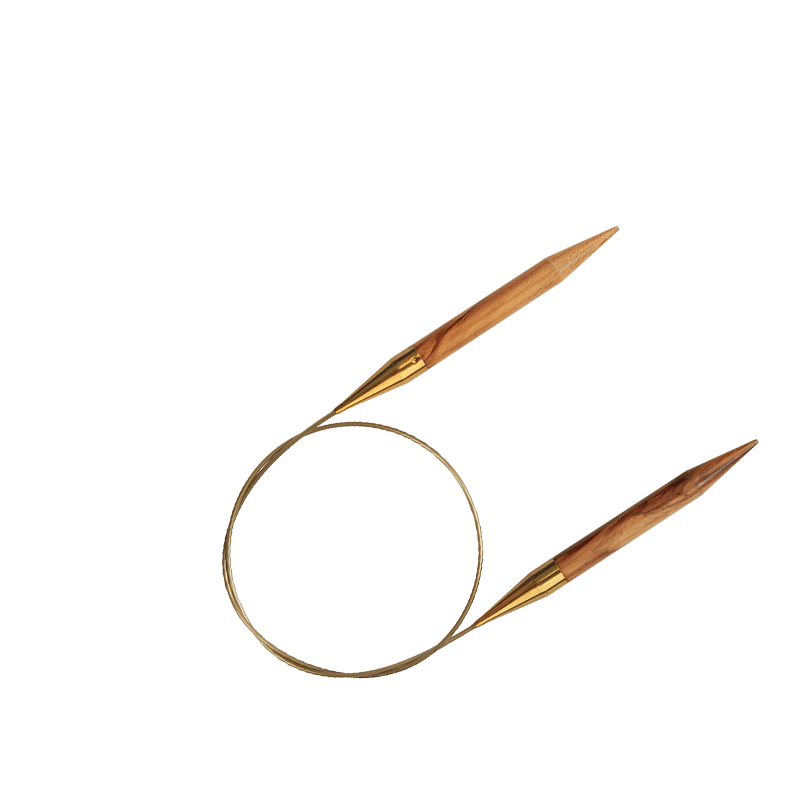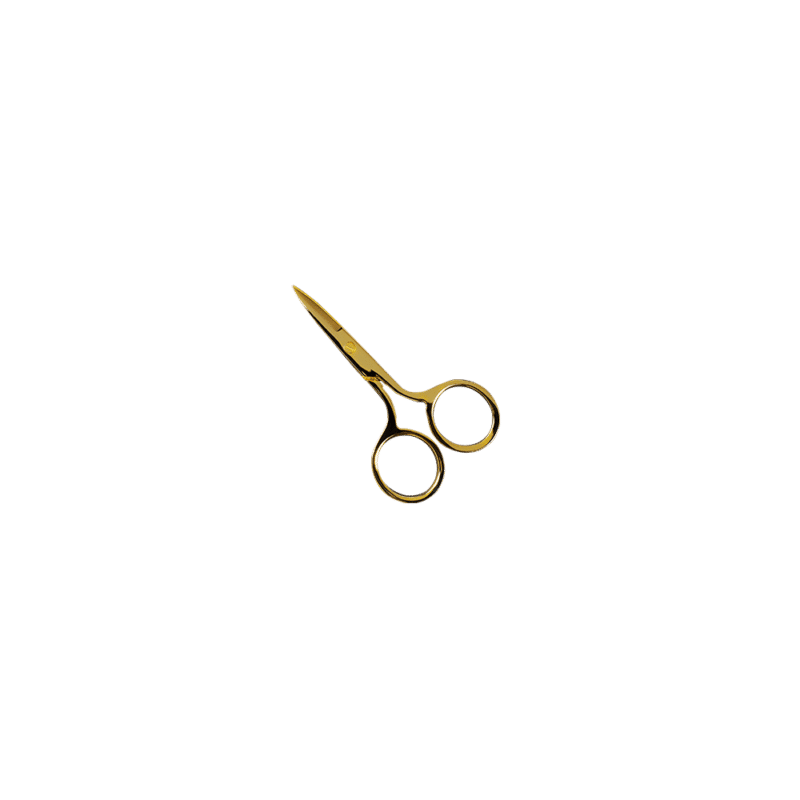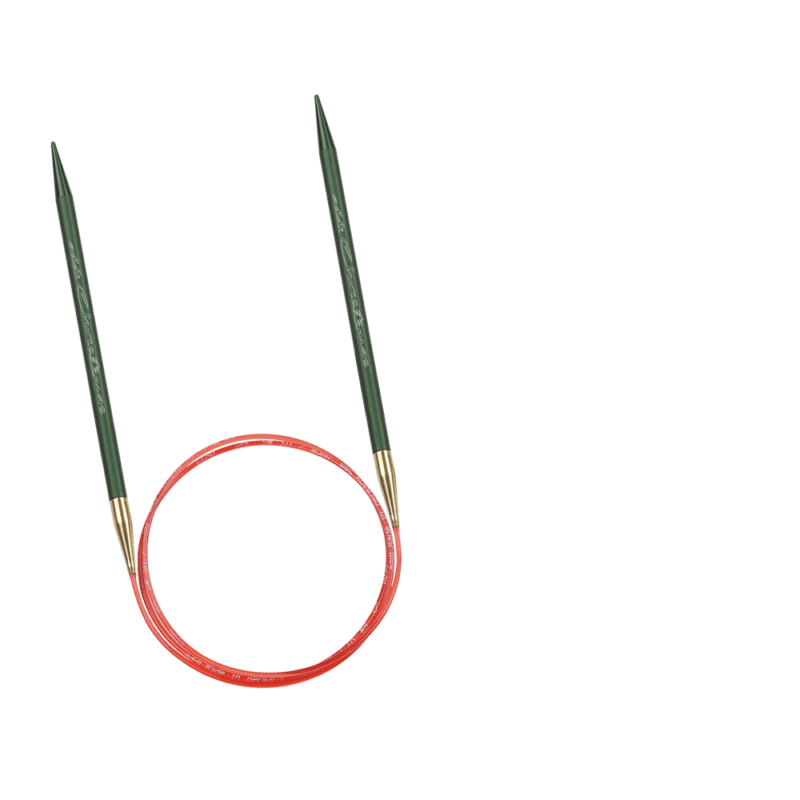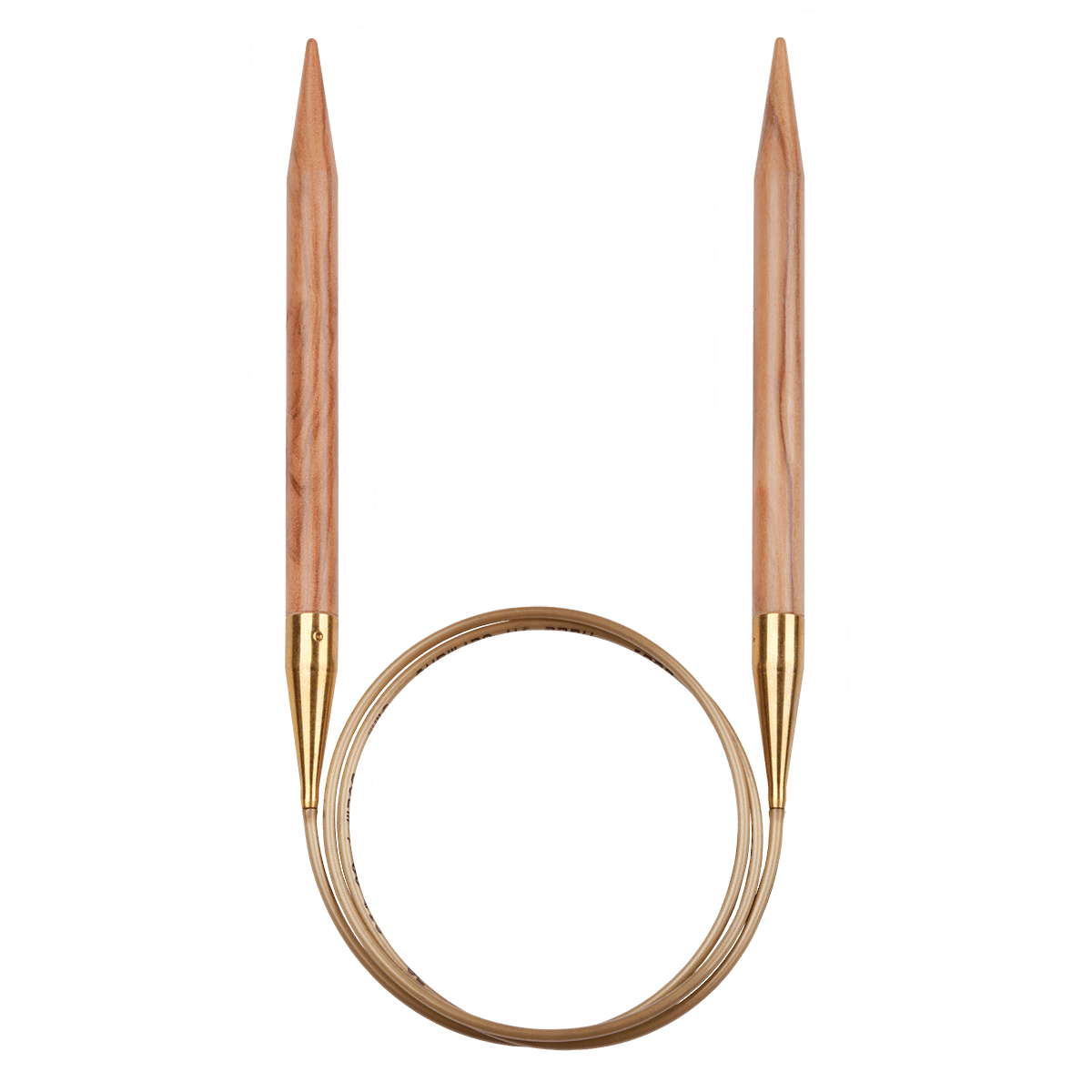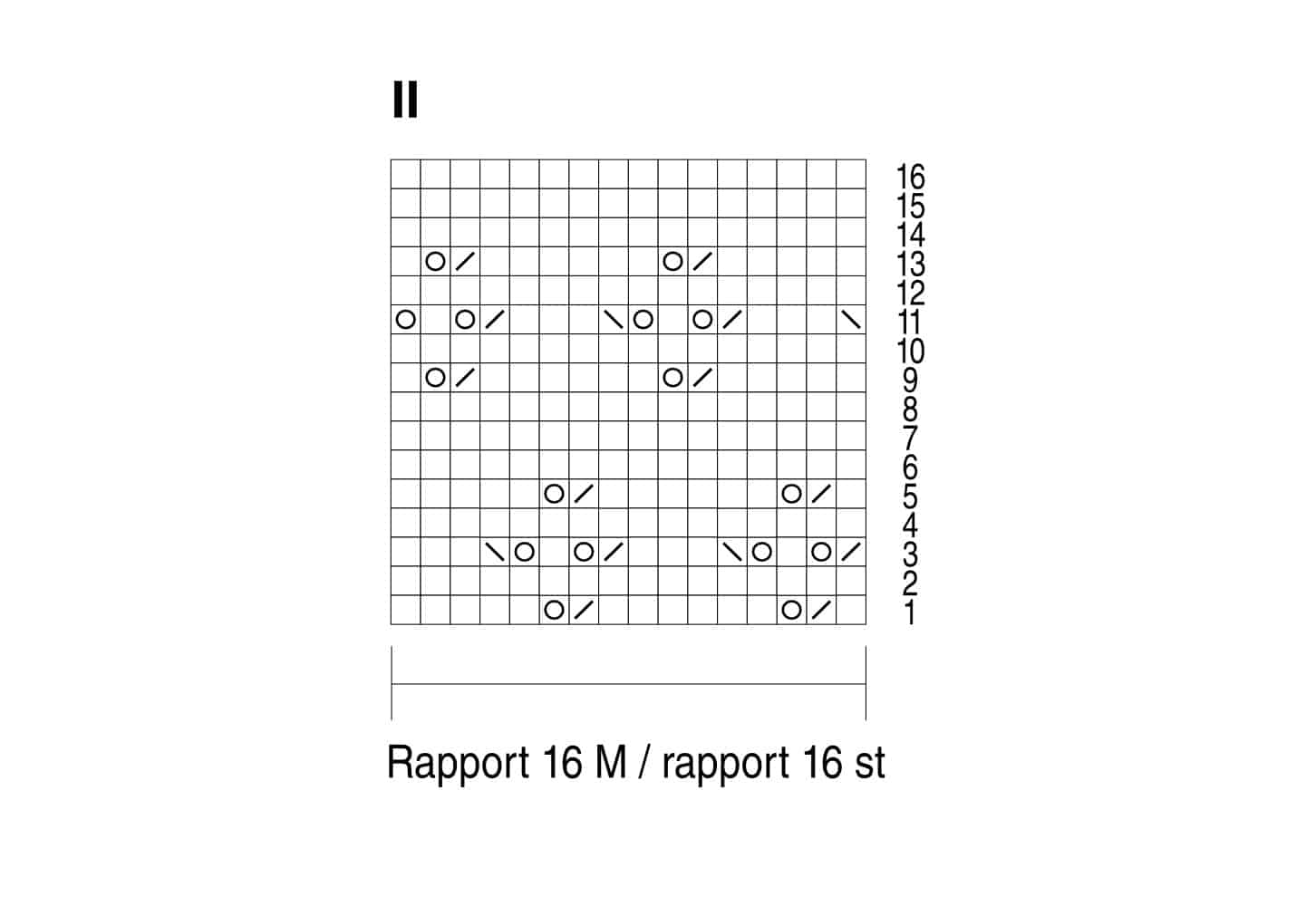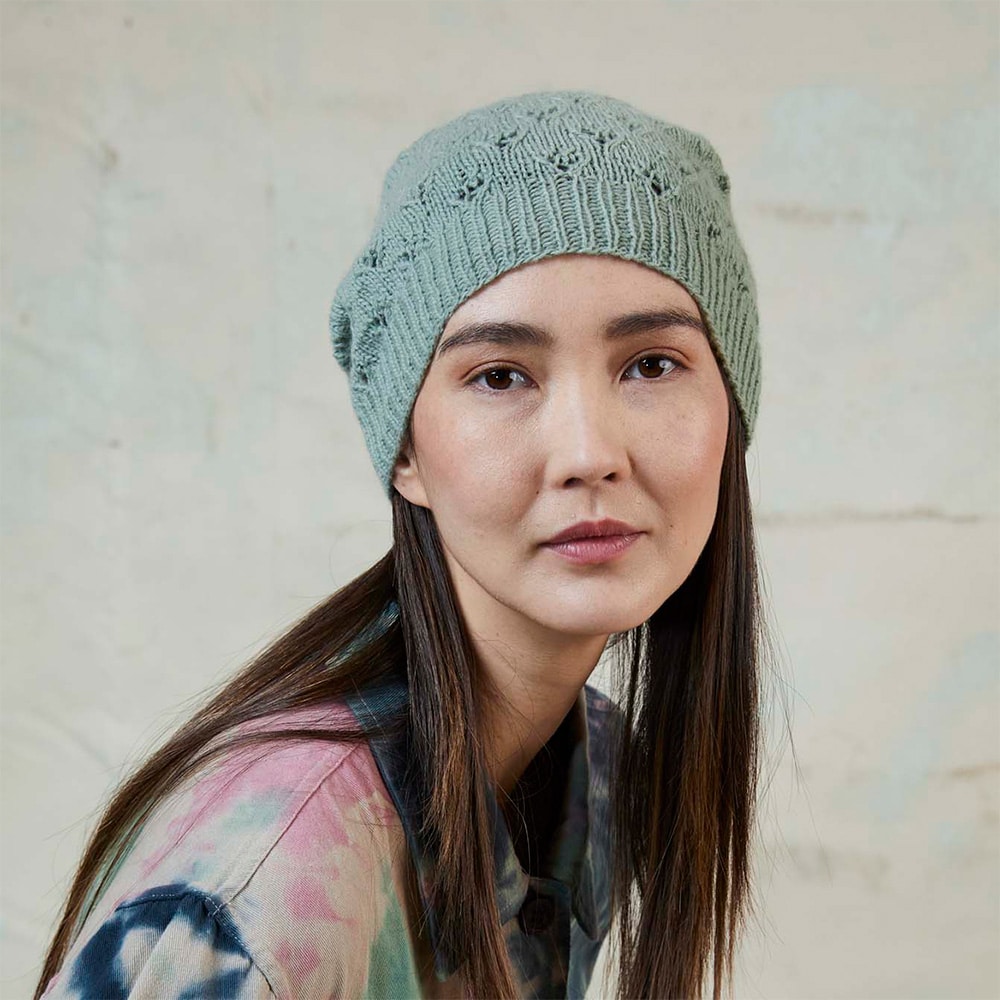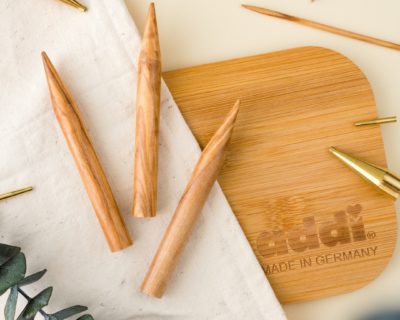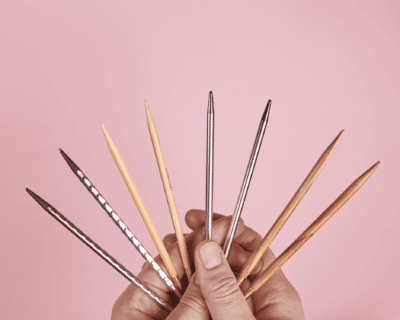Knitting instructions
„Pia“ Beanie mit Lochmuster stricken
A light and wonderfully soft cashmere beanie with a fine lace pattern. Ideal for spring and autumn. An instruction from Lang.

Table of contents
What you need:
- 2 Knäuel Langyarns Cashmere Premium 126 yd/ 0.88 oz (115m/ 25g) here sage, 100% cashmere
-
addi knitting needles US 4 + 6 (3,5 + 4 mm)
-
Either short circular knitting needle 12-16" (30-40 cm)
-
circular knitting needle with magic loop
-
Double-pointed needles 20 cm (8")
-
-
Wool needle
-
Scissors
Gauge:
Stockinette stitch: 22 stitches x 34 rows = 4x4" (10×10 cm)
Lace pattern: 22 stitches x 36 rows = 4x4" (10×10 cm)
Pattern
Pattern I - Ribbed knitting (needle size US 4/ 3½ mm):
- k1, p1 in rounds.
Pattern II - Eyelet pattern (needle size US 6/ 4 mm):
- According to chart. The pattern shows all rounds.
-
Always repeat the 1st - 16th round.
Pattern III - Stockinette stitch (needle size US 6/ 4 mm):
- Knit all stitches in the round
Legend of symbol:
- □ = knit 1 (k1)
-
╱ = knit 2t sts together (k2tog)
-
○ = yarn over (yo)
-
╲ = slip 1 stitch knitwise, k2tog, pass the slipped stitch over (sk2p)
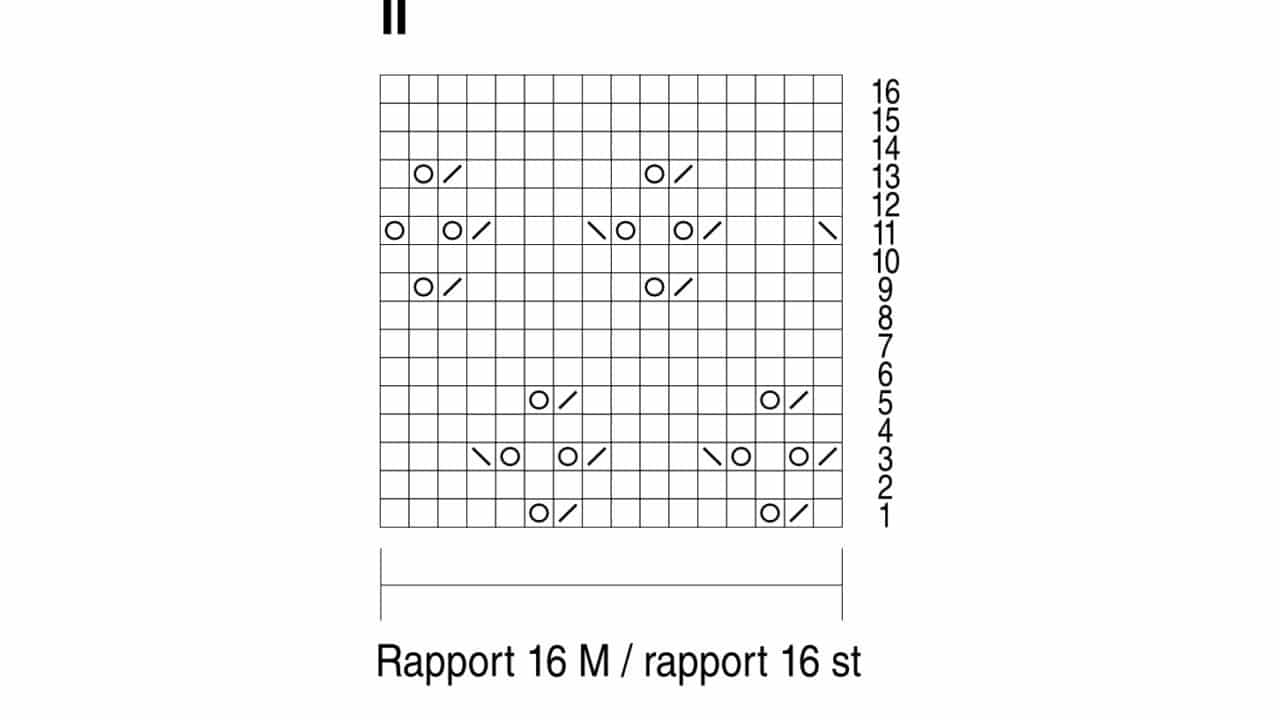
Pattern
Pattern I - Ribbed knitting (needle size US 4/ 3½ mm):
- k1, p1 in rounds.
Pattern II - Eyelet pattern (needle size US 6/ 4 mm):
- According to chart. The pattern shows all rounds.
-
Always repeat the 1st - 16th round.
Pattern III - Stockinette stitch (needle size US 6/ 4 mm):
- Knit all stitches in the round
Legend of symbol:
- □ = knit 1 (k1)
-
╱ = knit 2t sts together (k2tog)
-
○ = yarn over (yo)
-
╲ = slip 1 stitch knitwise, k2tog, pass the slipped stitch over (sk2p)

How it works
Knit beanie with lace pattern
Cast on 120 sts with the needles you selected.
Join the sts to the round and mark the beginning of the round.
Cuff:
- Knit in the round in pattern I (needle size US 4/ 3½mm) until 1.6" (4 cm) from cast on (approx. 14 rounds).
-
Now knit in the round with US 6 (4 mm) needle, picking up 8 sts (increase 1 stitch every 15th stitch).
Beanie:
- Now continue in pattern II, knitting the repeat 8 times (see tip) = 128 sts.
Tip: The 11th round in pattern II begins with 1 slipped decrease, but the last sts of the 10th round is slipped instead.
Decreases:
Continue knitting in pattern III at approx. 7.5" (19 cm) from cast on (after the 54th round) and start with the final decreases:
- From the beginning of the round: * Knit 14 sts, knit 2 sts crossed together *, repeat from * to * 8 times = 120 sts.
-
Knit 1 round without decreases.
Repeat these decreases every 2nd round (always with 1 sts less between decreases) until there are 16 sts left on the needle.
Pull the remaining 16 sts together with the end of the yarn and sew.

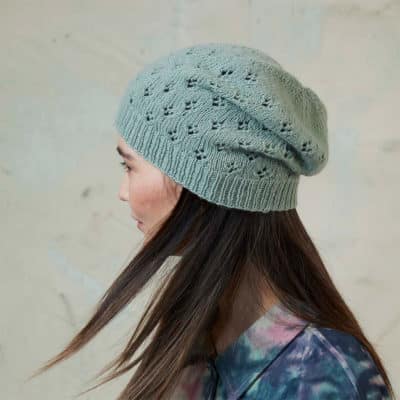
Have fun knitting and wearing!
How it works
Knit beanie with lace pattern
Cast on 120 sts with the needles you selected.
Join the sts to the round and mark the beginning of the round.
Cuff:
- Knit in the round in pattern I (needle size US 4/ 3½mm) until 1.6" (4 cm) from cast on (approx. 14 rounds).
-
Now knit in the round with US 6 (4 mm) needle, picking up 8 sts (increase 1 stitch every 15th stitch).
Beanie:
- Now continue in pattern II, knitting the repeat 8 times (see tip) = 128 sts.
Tip: The 11th round in pattern II begins with 1 slipped decrease, but the last sts of the 10th round is slipped instead.
Decreases:
Continue knitting in pattern III at approx. 7.5" (19 cm) from cast on (after the 54th round) and start with the final decreases:
- From the beginning of the round: * Knit 14 sts, knit 2 sts crossed together *, repeat from * to * 8 times = 120 sts.
-
Knit 1 round without decreases.
Repeat these decreases every 2nd round (always with 1 sts less between decreases) until there are 16 sts left on the needle.
Pull the remaining 16 sts together with the end of the yarn and sew.
Have fun knitting and wearing!
Tutorial also available for download and in the addi2go app
You can find the written instructions to print out in GER, FR, NL, ENG and DK from our partner LANG YARNS.
You can also find the instructions digitally in our addi2go app. There you can save the instructions in a project with row counters and notes.
